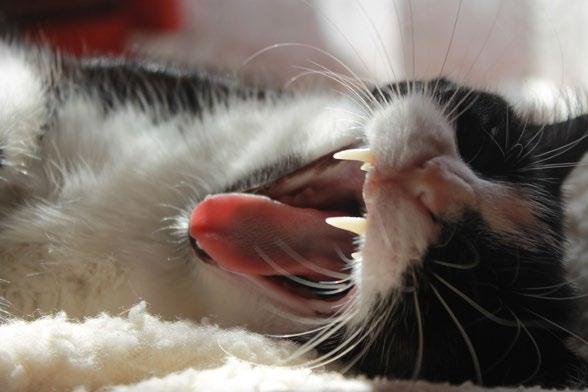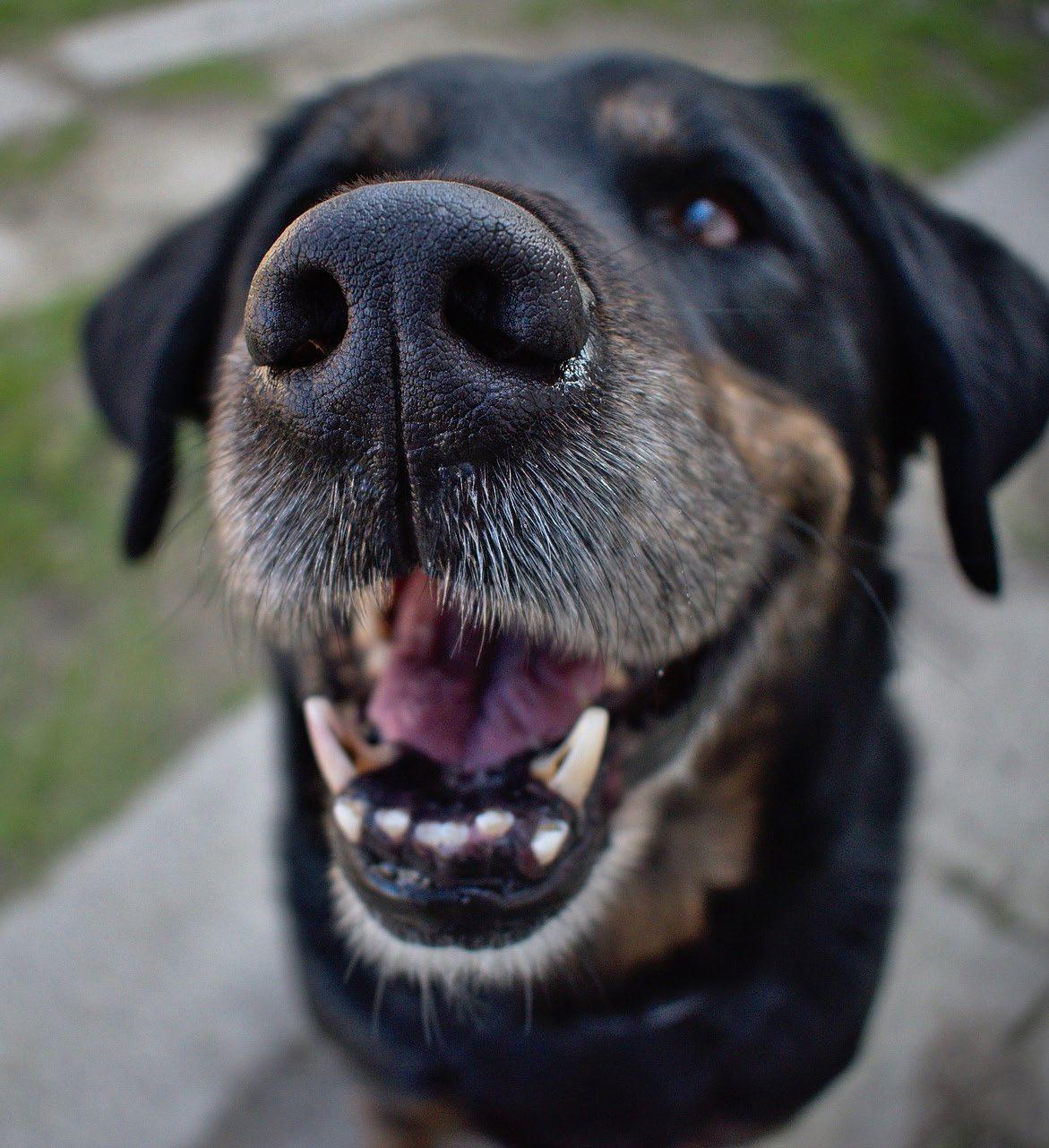
2 minute read
pets corner
Something to get your Teeth into by Dr Steph Gowing MRCVS
February was dental health awareness month for our pets, so I thought this month I would write on the importance of regular dental care at home and at the vet.
Advertisement
What does poor dental hygiene look like? When teeth aren’t brushed every day, plaque builds up. This is a smelly invisible film of bacteria, feeding on leftover food in the mouth. If this is not removed, it quickly accumulates to tartar, which is browny-yellow or grey, most often on the big canines or the larger chewing teeth at the back of the mouth. Tartar has a very rough surface which helps even more bacteria stick to it over time and harden in more and more layers, which we call calculus. Tartar and particularly calculus are pretty much impossible to remove without professional scaling.
At the point of tartar or early calculus, bacteria start to invade the gums and attachments that hold the teeth in place, making everything red and sore, called gingivitis. If this advances, the gums and bone are progressively eaten away, the teeth are loosened and large pockets form under the gum that fill with more bacteria. These pockets make the tissue break down even faster and can lead to abscesses - buildups of pus and bacteria around the root of a tooth.
Unfortunately, our beloved pets do themselves no favours. They will usually continue to eat and rarely show pain - this is why it is often believed tooth disease isn’t painful or doesn’t need regular treatment. It is often difficult and slow to train pets to allow toothbrushing, encourage them to take up chews with toothpaste in or drink water with solution in to help discourage plaque formation. This means, we often don’t treat our pets’ mouths until they have been sore for some time, and need multiple teeth taken out. What can you do to help? Discuss with your vet about ways you can help your pet at home or products you can try. You can also book in for free checks with vet nurses to discuss how to train your pet to allow toothbrushing in a way that makes it positive and so it’s not a fight between you. Home care is the most important step to your pet keeping all their teeth into their senior years. The other vital thing is to be proactive about getting your pet’s teeth regularly cleaned, at least every few years. It is much better for their long term health, and the overall cost of treatment, to book in for cleaning before the need for extractions, and you can be comforted in the knowledge you are one of the wonderful minority that keep their pet’s mouths comfortable and healthy for their whole lifetime.













